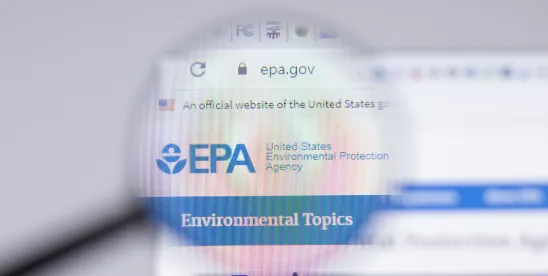Under the Biden Administration, the federal government published a detailed PFAS Strategic Roadmap document that enumerated specific action items that the EPA would address during Biden’s presidency. Under the Trump administration, uncertainty has been the theme of predictive conversations related to actions that the new administration might take related to PFAS. Given the administration’s stance on many environmental issues, many assumed that the administration would largely roll back the Biden EPA’s PFAS progress; however, I believe that view overlooks the political sensitivity among citizens that PFAS has, essentially making a full roll back untenable.
On April 28, 2025, though, the EPA published the first of what it promises will be many PFAS action item lists explaining how it intends to proceed with respect to PFAS. The EPA explained that its action list was guided by the principles of “strengthening the science, fulfilling statutory obligations and enhancing communication, and building partnerships.” Under each principle, the EPA lists several action items intended to advance the principle. Some of the key action items include:
- Implement a PFAS testing strategy under Toxic Substances Control Act (TSCA) Section 4 to seek scientific information informed by hazard characteristics and exposure pathways
- Launch additional efforts on air related PFAS information collection and measurement techniques related to air emissions
- Identify and address available information gaps where not all PFAS can be measured and controlled
- Develop effluent limitations guidelines (ELGs) for PFAS manufacturers and metal finishers and evaluate other ELGs necessary for reduction of PFAS discharges
- Add PFAS to the Toxic Release Inventory (TRI)
- Enforce Clean Water Act and TSCA limitations on PFAS use and release to prevent further contamination
- Use Safe Drinking Water Act authority to investigate and address immediate endangerment
- Achieve more effective outcomes by prioritizing risk-based review of new and existing PFAS chemicals
- Work with Congress and industry to establish a clear liability framework that operates on polluter pays and protects passive receivers
- Advance remediation and cleanup efforts where drinking water supplies are impacted by PFAS contamination
- Finish public comment period for biosolids risk assessment and determine path forward based on comments
- Resource and support investigations into violations to hold polluters accountable
While the list seems to continue the work of the prior EPA in several key areas, no details are provided as to how the EPA intends to pursue and achieve these key goals. Questions naturally arise, as well, as some of the action items seem at odds with other actions taken by the EPA. For example, four of the above tasks are related to or will require scientific investigation into issues such as risks posed by PFAS. However, the EPA has already eliminated positions for scientific research that existed in the EPA, which naturally raises questions as to how much progress can truly be made given the dirth of scientists employed by the EPA.
Further, several of the action items focus on enforcement action to pursue actions against “responsible parties” or “polluters.” However, with staffing reductions and funding reductions likely, one must wonder how aggressive the EPA can actually be with respect to enforcement if it lacks both the human power and fiscal resources to pursue enforcement actions.
In my view, the EPA’s Action List in its current form is more of a political nod to citizen awareness of PFAS issues to show that the EPA is at least not completely undoing what the prior EPA did with respect to PFAS. However, the lack of substantive action steps, timelines, or goals for each task raises more questions than are answered as to how the EPA intends to tackle the multitude of PFAS issues that exist. Couched in language in the EPA’s action list is verbiage that indicates that the EPA will consider various issues, but consideration should not be interpreted to mean deliverable action in terms of scientific progress, regulation creation or enforcement action.
May and June 2025 will provide key insights into EPA’s intentions with respect to PFAS, as it is due to report to the court as to how it plans to address the Safe Drinking Water Act and CERCLA regulations enacted by the prior EPA. Until then, the most conservative approach with respect to the current EPA’s intentions with respect to PFAS should continue to be a “wait and see” approach until actual actions are taken. Companies should not, however, be lulled into a sense of false security thinking that the EPA’s slow approach to PFAS means a presidential term free from PFAS risk. To the contrary, while the federal government will act much slower than than under the prior EPA, states will once again step in to fill the regulatory void with respect to FPAS and the ever-increasing PFAS litigation impacting companies that were not PFAS manufacturers will continue to present significant risks to companies.




 />i
/>i

